CHRISTCHURCH, 185 EMPTY WHITE CHAIRS
Remembrance of 22nd February 2011
About 185 Empty White Chairs
The concept of The Empty Chair depicting the loss of someone has been used repeatedly across time and cultures.
My inspiration for this installation came from Van Gogh's painting of empty chairs depicting the personality of their owners.
The installation consists of 185 white chairs, each one different, representing the individuality of those who died as a result of the Christchurch earthquake on 22nd February 2011.
The chairs are all ordinary, everyday chairs that have been hand-painted with two coats of paint, and placed on 185 square metres of readylawn. They were initially placed on the site of Oxford Terrace Baptist Church for the first anniversary of the earthquake, but have been on the current site, St Pauls Trinity Pacific Presbyterian Church, diagonally opposite the CTV building site, since October 2012.
The chairs were acquired from a number of sources:
Many were purchased from Trade Me while others were donated by victims' families, friends and work colleagues. The individuality of each chair pays tribute to the uniqueness of each person represented. From a baby capsule to a rocking chair, an office chair to a wheelchair, each chair is representative of different ages and stages of life and various cultures. The installation resonates with people by the ordinary, everyday nature of the chairs. For instance, although nobody was killed in a wheelchair, 3 people have ended up in one and people have commented that they felt 'crippled' by the earthquakes. Everybody can find a chair, or series of chairs, that they can identify with.
The installation has become a place for people to reflect on the earthquake and the the loss of lives, livelihood and way of life.
As memories of the events of the earthquake fade, the installation remains as an ongoing place of reflection and acknowledgement of loss.
Art is open to interpretation, and art can transcend a specific event. It can speak to us, and speak for us, when we have no words to express how we feel.
An art installation reflecting on the loss of lives, livelihood and living in our city following the earthquake of 22nd February 2011.
The individuality of each chair pays tribute to the uniqueness of each person represented.
This presentation is a proposal to make this installation permanent.
Download our complete proposal in print format here: 03_Christchurch-185Chairs-Draft_R005.pdf
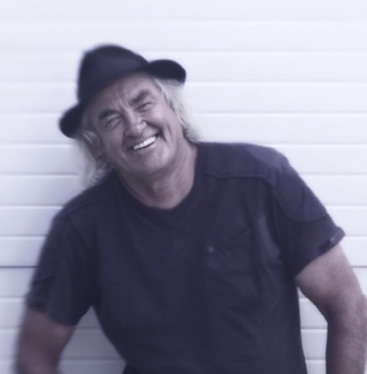
Who Is The Artist?
Pete Majendie:
- Art curator
- Stand-up comedian
- Conceptual Artist
- Learn more about Pete at www.sidedoor.org.nz
RAMUS:
- World leaders in lighting and video design
- RAMUS create luminous art
- Learn more about RAMUS at www.ramus.com.au
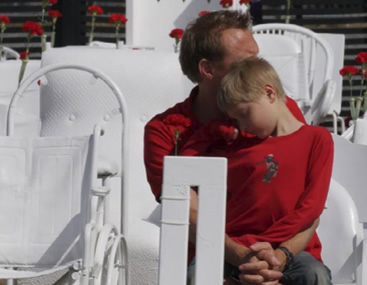
REMEMBER:
An art installation reflecting on the loss of lives, livelihood and living in our city following the earthquake of 22nd February 2011 The individuality of each chair pays tribute to the uniqueness of each person represented.
This presentation is a proposal to make this installation permanent.
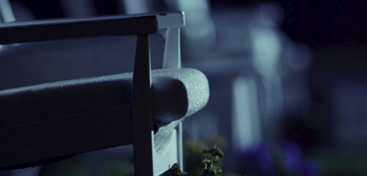
REFLECTION:
Art is open to interpretation, and art can transcend a specific event.
It can speak to us, and speak for us, when we have no words to express how we feel. As memories of the events of the earthquake fade, the site will remain as an ongoing place of reflection and acknowledgement of loss.
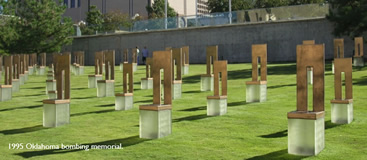
INSPIRATION:
The concept of The Empty Chair depicting the loss of someone has been used repeatedly across time and culture.
In 1888, Van Gogh portrayed the difference between art and life in his two chairs, and in 1870, Luke Fildes drew the Empty Chair signifying the death of Charles Dickens.
More recently, public memorials have made use of empty chairs to embody loss of lives, as in 1995 in Oklahoma, and 2011 in Bryant Park, NYC.
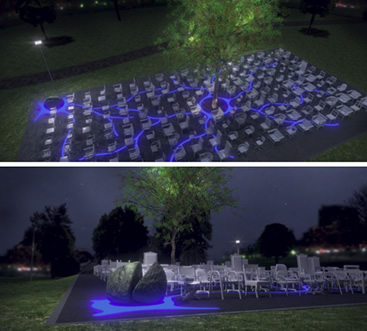
PERMANENCE:
Comprising of a black concrete base measuring 21m x12m, sloping from 100mm at the front edge to 500mm at the back, the ground is no longer ‘a level playing field’.
Exposed agregate to provide a non-slip surface.
Dendritic-like cracks in the concrete, lit from within, depict not only the cracks in the ground but also speak of feelings and emotions, nerve cells.
The edge of the base is faced with stainless steel.
The 185 chairs will be made from aluminium then powder coated white.
The styles will be wide ranging - from a baby capsule to a rocking chair, an office chair to a wheelchair.
Each one representative of different ages and stage of life, and various cultures.
They will then be permanently attached to the concrete base in rows.
At the centre of the chairs will be a tree sourced from the Red Zone.
On the front left-hand corner a large split greenstone boulder, with the internal faces polished, is lit from below. It represents the ground cracked open and, while not written there, suggests the names of those lost are held by the earth.
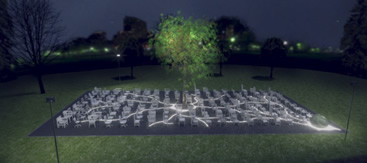
HEALING:
Everybody can find a chair, or series of chairs, that they can identify with.
In this way, the chairs form a direct physical connection to those lost. The installation transcends the actual event of the earthquake and offers a place of reflection and healing for all kinds of loss.
LOCATION:
185 Empty Chairs was built on the site of the Oxford Terrace Baptist Church for the first anniversary of the February Earthquake, in remembrance of those who died in the quake, and was subsequently moved to its present site, St Paul’s Trinity Pacific Presbyterian Church, diagonally opposite the CTV site.
As it will eventually have to move again, it highlights the necessity for a permanent site. The proposal to position the chairs on the CTV site acknowledges the ‘ground zero’ nature of the site. The existing temporary installation is already well visited by locals and tourists and appears on tourist information maps and websites.